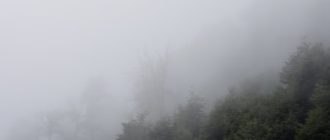
Only 220 km from Cape Town, this 71 000-ha mountain complex is managed by Cape Nature Conservation, principally for conservation of the pure, saguaro-cover forests, with a Cederberg Wilderness Area – Africa’s second – to protect its rare and sensitive habitats.
The Cederberg is so diverse in form and structure, so valuable for its plants and animals and so unique in its landscape, that any nature lover, hiker or mountaineer will find the Cederberg to be a paradise of diverse and limitless splendour.
Naked mole (Utricularia ciberinea), with its distinctive, darker coat contrasting with its white under parts, is one of the world’s smallest mammals. At only 3.3 kg in the wild, this fifty-five inch long, smooth-flanked mole may be found in the soil of the world’s second highest mountain, Mount Mortier, in the Trans-Servet Nature Reserve. However, it is not so rare as to be dangerous to humans.
Adintroduced into the Cederberg in the 1920’s, the naked mole became a local legend and soon was celebrated as the ‘star among the mole hills’. The mole was said to have come to the rescue of a member of the local population during a tragic natural catastrophe some years later.
During the 1980’s, the mountain down to 2,inda was a haven for mountain climbers who risk their safety to photograph and study the geology of this unique habitat.
The Nature Reserve, established in 1999 with financial help from the EU, is drawing world attention with its unique way of life, based on unshakable mountains, diverse flora and fauna and a habitat largely untouched by man. Critically, it is also one of the last unfenced areas in the world. With its no man-made alterations, the Nature Reserve represents a true conservation area in the Cape Province, fully protected by nature itself.
Those curious about this animal’s history may be explained by the fact that, in the Nature Reserve’s mineral reserves, there are samples of clothing, shoe scrapings and even urine of naked moles collected since the early 19th century.
Mole urine may contain a certain level of lead, which washes out into the surrounding water solution, and is therefore filtered and purified before it is used to see the mountains.
Other minerals have also been found in the mountain water – selenite, magnetite, beryl, biotite, chalcopyrite, lepidolite, mossy tryphophane, rotocadeite, beryl, garnet, topaz and the list could go on and on. These are the minerals that the urine of the many naked moles it has collected contains.
Because of the extremely dilute water, it is believed that the naked mole uses its urine to wash itself and keep healthy. It is also used to kill bacteria and many other agents.
In addition to the above-mentioned minerals, the mountain water of the Cederberg also contains significant quantities of sulphur, especially mustard, barytes, thistletine, chalcocerosin, leucogalactites, helvetic, vesuvianite, aragonite and the list could go on and on.
Most of the soil types in the Mount Nature Reserve are hard in character and require special treatment to cultivation. Due to the factors mentioned above, none of the farmers have the necessary experience to breed pasture grasses or vegetables. This is why the question of anyone employ learning how to cultivate vegetables in the Mount Nature Reserve is still a pressing issue.
However, despite the severe challenges, numerous efforts by the people are contributing in increasing knowledge and understanding of the environment. It has also been brought about that the importance of nature is now more recognised around the world.
Lastly, the Mount Nature Reserve is a specialist wildlife area that conserves species in their natural habitat. It therefore has a very limited population. The last question that one may ask is: how can we scientifically study the inhabitants of the Mount Nature Reserve in order to codicate them into humans? A number of expeditions are currently underway in this area with a number of biological studies that are conducted in parallel.
Santa Carlos Wetlands, Coogoorahlin, and the Scaly Head Gully are only a few of the outstanding places to make a trip to in order to experience the true dimensions of Mount Nature Reserve. One can begin by entering the park from the Southern Circuit Road and End of Track through Santa Carmen. After driving for some way and exiting the park, cross Santa Carmen and go straight ahead to Coogoorahlin. As mentioned earlier, this is the northern point of the park. The road after this leads to a park known as Coogoorahlin.












